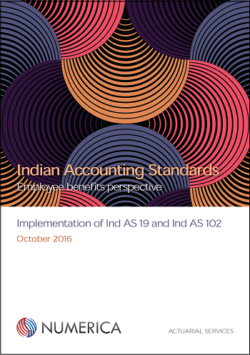
Many employers choose to fund their gratuity liabilities by paying regular contributions to an insurance company. However, employers often do not fully understand what they gain from gratuity funds and what to expect from these arrangements.
A significant proportion of Indian companies set aside funds with an external fund manager, mostly an insurance company like the LIC, to pay out gratuity benefits payable to their employees in future. There are three issues to understand about this arrangement:
- Nature of the contract; what are you signing up for
- What you will achieve; what are the benefits from your perspective
- What you will not achieve; what you still need to do after entering into a contract
1. Nature of the contract
Funding with an insurance company (an insurer) usually involves purchasing a special insurance policy, generally referred to as ‘Group Gratuity Scheme’ or a similar name. This contract works as follows:
- The contract involves a company (employer) paying regular premium to the insurer. In return, the insurer agrees to pay gratuity to company’s employees as and when they leave service because resignation, retirement or death.
- From the premium received, the insurer deducts ‘risk premium’ to insure something called ‘future service gratuity’ (see below) and the balance is ‘contribution’, which is deposited to the employer’s gratuity fund.
- The gratuity fund is like a mutual fund or a bank account from the employer’s perspective. The fund belongs to the employer (to the gratuity trust, to be precise), and the insurer manages the fund on behalf of the employer and administers the payments.
- One important thing to understand is that the insurer pays gratuity from the employer’s gratuity fund. Therefore, any shortfall in the fund will need to be met by the employer, not the insurer.
Please read our blog post here, to understand whether you should fund your gratuity liabilities.
What is future service gratuity? By law, gratuity amount is calculated as 15 days of salary for each year of service. But, if an employee dies in service, the gratuity is calcualted as 15 days of salary for each year of ‘potential’ service till retirement. Therefore, in case of death, gratuity amount is calculated not just on past service rendered by the employee, but also ‘future’ service that the employee could have rendered if he or she had worked till retirement. Therefore, the employer is liable to pay an extra 15 days of salary for each year of future service. This extra payout in case of death is referrred to as future service gratuity and is usually insured by paying a risk premium.
By insuring future service gratuity, the employer transfers the liability to the insurer. The liability for past service gratuity stays with the employer.
2. What you achieve from a gratuity fund
By getting into a contract with an insurer, an employer can avail the following benefits:
- Contributions paid to an approved gratuity fund are tax-deductible up to a certain limit
- Investment income earned in the fund is also tax-free
- By investing with an insurance company, employers can invest in certain asset classes which are otherwise restricted if the fund is managed internally, such as equity
- Benefits administration, investment advice, funding advice are provided by the insurer
3. What you still need to do
Employers still need to perform several other tasks in relation to the gratuity scheme, for example:
- Ensure that the gratuity fund is adequately funded, as the responsibility for making the gratuity payments rests with the employer
- Consider getting the following anlayses done on a regular basis: (1) Funding valuation, to ensure that the level of gratuity fund remains sufficient to meet the liabilities as they fall due; (2) Asset-liability management, to ensure that the fund is composed of the right type of assets to maximise the investment return, and minimise the insolvency risk; (3) Cashflow projection, to optimise the tax benefits.
- Actuarial valuations for accounting purposes, such as AS 15 or Ind AS 19 still remains the responsibility of the employer
- Fulifill any other contractual obligations.
Download our guide on transitioning to Ind AS 19 from AS 15 by clicking on the picture below:


June 07, 2018 at 10:34 pm, 5 issues to consider for funding a gratuity scheme • Numerica said:
[…] already, providing answer to some commonly asked questions. Another post, which can be accessed here, discusses various mis-conceptions about insurer-managed gratuity […]